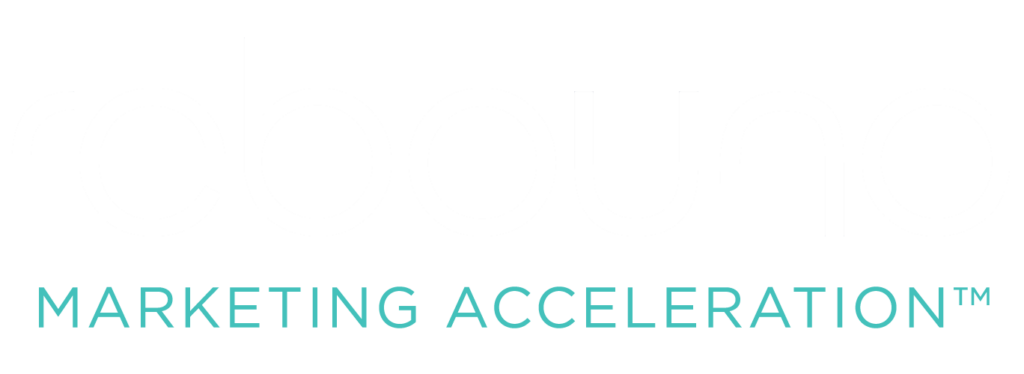Life Science Tech companies are adopting digital marketing to grow their market presence and connect with target audiences. Compared to less regulated industries, Life Science Tech faces unique challenges due to strict rules, complex products, and specialized audiences.
Here’s how to tackle the three biggest operational obstacles in Life Science Tech digital marketing.
1. Navigating Compliance and Ethical Considerations
Healthcare companies operate under the scrutiny of regulatory bodies like the FDA, HIPAA (in the US), GDPR, and EMA (in Europe), which set firm marketing guidelines.
The Complexities of a Highly Regulated Environment
Strict rules affect online promotion strategies. Google Ads often restricts healthcare ads to protect consumers. For example, if you promote clinical trial software, Google might flag your ads as patient recruitment. Unless you appeal, your delivery will be limited in most countries. To improve delivery, adjust ad and landing page copy to remove potentially problematic phrases and submit appeals promptly.

It’s critical to understand that these regulations aren’t static; they evolve. The FDA, for instance, frequently updates its guidance on promotional activities, particularly concerning digital channels. Keeping abreast of these changes requires a proactive approach, including continuous monitoring of regulatory publications and active participation in industry discussions. Failure to adapt can result in significant penalties, including fines, legal injunctions, and damage to a company’s reputation.
Data Privacy and Security
Protecting patient data requires following regulations like HIPAA. Online marketing requires understanding legal requirements and using technical measures to protect data.
The emphasis on data privacy extends beyond just HIPAA and GDPR. Many countries are enacting their own data protection laws, creating a complex web of regulations that Life Science Tech companies must navigate. This necessitates a robust data governance framework that encompasses not only data storage and transfer but also data processing and usage in marketing activities. Companies must implement stringent access controls, encryption protocols, and audit trails to ensure that patient data remains secure and that compliance can be demonstrated.
Best Practices for HIPAA Compliance in Marketing
When creating materials, ensure patient testimonials include proper consent documentation. Avoid using personally identifiable information in case studies without permission. Use secure data collection systems on your website that explain how information will be used. Use HIPAA-compliant email providers with encryption. Regular security audits can find vulnerabilities before they cause compliance issues.
Furthermore, it’s essential to train marketing teams on the nuances of HIPAA and other relevant privacy regulations. This training should cover not only the legal requirements but also the ethical considerations involved in handling sensitive patient information. Role-playing scenarios and case studies can be valuable tools for reinforcing best practices and ensuring that team members understand how to apply the regulations in real-world situations.
Ethical Marketing
Healthcare companies must consider the ethics of their promotions. Keeping information confidential and maintaining trust with the scientific community is essential. Marketing mistakes can harm reputation and lead to legal trouble.
Ethical marketing in the Life Science Tech industry goes beyond simply avoiding legal violations. It involves a commitment to honesty, transparency, and respect for the vulnerability of patients. This means avoiding manipulative marketing tactics, such as fear-mongering or unsubstantiated claims, and presenting information in a balanced and objective manner. Companies should also be mindful of the potential for conflicts of interest and ensure that their marketing activities do not compromise the integrity of scientific research or clinical practice.
Balancing Promotion and Responsibility
Life Science Tech marketers must balance business goals with scientific integrity. Because healthcare solutions directly impact patient outcomes and clinical decisions, campaigns should avoid exaggeration and clarify the difference between proven results and potential benefits. Create review processes that include scientific and medical experts to assess claims before publication.
This balancing act requires a collaborative approach that involves close communication between marketing, legal, and scientific teams. Marketing professionals need to understand the scientific evidence supporting their claims, while scientists and medical experts need to appreciate the importance of effective communication in reaching target audiences. By working together, these teams can ensure that marketing campaigns are both compelling and scientifically sound.

How to Overcome Regulatory Obstacles:
- Invest in Compliance Management Software: Streamline regulatory adherence and simplify content management.
- Regular Training: Keep teams updated on regulatory changes and ethical standards.
- Focus on Transparency: Be open about product capabilities and limitations.
- Develop Clear Approval Workflows: Use structured review processes with legal, scientific, and marketing stakeholders.
- Create Compliant Templates: Develop pre-approved language to speed up reviews.
2. Engaging Scientists and Healthcare Professionals
The specialized nature of the medical field makes identifying and connecting with the right demographic difficult. The Generative AI in Healthcare survey shows that professionals prioritize accuracy in tech value propositions.
Understanding Scientific Decision-Makers
Healthcare professionals work within complex organizations. Research institutions involve principal investigators, lab managers, procurement specialists, and institutional review boards. Medical facilities include physicians, department heads, IT directors, and finance teams. Effective marketing requires mapping this decision network and tailoring messages to each stakeholder’s priorities. Develop detailed buyer personas rather than treating “healthcare professionals” as one group.
It’s also important to recognize that decision-making in healthcare is often a group process. Purchasing decisions for new technologies or treatments may involve input from clinicians, administrators, and even patients. Marketers need to understand the dynamics of these decision-making units and identify the key influencers within them. This may require employing a variety of marketing tactics, such as account-based marketing, to target specific individuals and groups.
Content Strategy
Creating relevant material for medical experts requires an understanding of their needs and communication preferences. Content must be authoritative, scientifically sound, and accessible to gain attention amid information overload. LinkedIn and similar platforms are useful for networking with specialists, while search engine optimization improves the discoverability of scientific content.
The format and delivery of content are also crucial. Healthcare professionals often prefer concise, evidence-based information that can be quickly and easily digested. White papers, case studies, and webinars are popular formats, but it’s important to ensure that these materials are visually appealing and easy to navigate. Mobile optimization is also essential, as many healthcare professionals access information on their smartphones or tablets.
Leveraging Thought Leadership
Position your organization as a thought leader by developing strategic content. Commission original research that addresses knowledge gaps. Host expert discussions with key opinion leaders. Create educational resources that help professionals stay informed. These approaches establish your company as a valuable resource for the scientific community.
Thought leadership is not just about producing content; it’s about building relationships. Companies should actively engage with the scientific community through conferences, workshops, and online forums. This provides opportunities to share expertise, gather feedback, and collaborate on new initiatives. By becoming a trusted source of information and a valued partner, companies can enhance their credibility and influence.

Ways to Improve Audience Engagement:
- Leverage Professional Networks: Use LinkedIn for targeted content distribution.
- Develop High-Value Content: Produce webinars, white papers, and case studies that offer real value.
- Optimize for Search: Use strong SEO strategies to increase visibility.
- Participate in Scientific Communities: Contribute to specialized forums and professional associations.
- Utilize Account-Based Marketing: Focus on high-value institutions rather than broad demographics.
3. Communicating Complex Information
The medical industry deals with technical data that must be communicated effectively to various stakeholders. Simplifying intricate details while maintaining scientific accuracy is a key challenge.
Audience Diversity
Healthcare audiences need tailored messaging based on their technical knowledge. Highly specialized content can alienate non-specialists, while oversimplified information may not engage experts.
This diversity requires a flexible communication strategy that can adapt to the needs of different audiences. For example, when communicating with patients, it’s crucial to use clear, non-technical language and to avoid jargon. Visual aids, such as diagrams and videos, can be helpful in explaining complex medical concepts. When communicating with physicians or researchers, on the other hand, it’s appropriate to use more technical language and to provide detailed scientific data.
Creating Tiered Educational Pathways
Develop clear educational paths that guide users through increasingly detailed information. Start with basic concepts for everyone, then create progressive content with more technical depth for specialists. Implement this with a website structure that guides users through their learning.
This tiered approach can be implemented through various digital tools, such as learning management systems (LMS) or interactive platforms. These tools can track user progress and provide personalized learning experiences. Gamification elements, such as quizzes and badges, can also be used to increase engagement and motivation.
Building Credibility
Organizations must ensure communications meet regulatory standards and convey credibility.
Credibility is paramount in the Life Science Tech industry, where trust is essential for building relationships with customers and stakeholders. Companies can enhance their credibility by providing evidence-based information, citing reputable sources, and being transparent about their data and methodologies. Third-party endorsements, such as certifications or awards, can also be valuable in building trust.
Leveraging Social Proof
In scientific marketing, social proof takes specific forms. Showcase peer-reviewed publications featuring your technologies, list institutions using your solutions, and highlight validation studies from independent researchers. Documentation of quality processes and compliance certifications builds trust with knowledgeable audiences.
It’s important to actively promote these forms of social proof through various channels, such as website testimonials, case studies, and social media. Companies can also leverage their relationships with key opinion leaders to generate endorsements and build credibility within the scientific community.
Strategies for Effective Communication:
- Multi-tiered Content: Develop various content types for different stakeholder groups.
- Visual Aids: Use infographics and videos to explain complex data.
- Expert Involvement: Include scientific experts in content creation.
- Interactive Tools: Develop simulators or calculators for practical application.
- Comprehensive FAQs: Create searchable knowledge bases with detailed answers for various expertise levels.
Conclusion
Effective Life Science Tech digital marketing requires addressing sector-specific challenges: regulations, specialized audiences, and complex information. By focusing on compliance, targeted outreach, and clear communication, companies can improve their digital presence and achieve better results.
Ready to improve your life science digital marketing? Contact Rebound today for a consultation and begin creating more effective, compliant digital marketing solutions.


